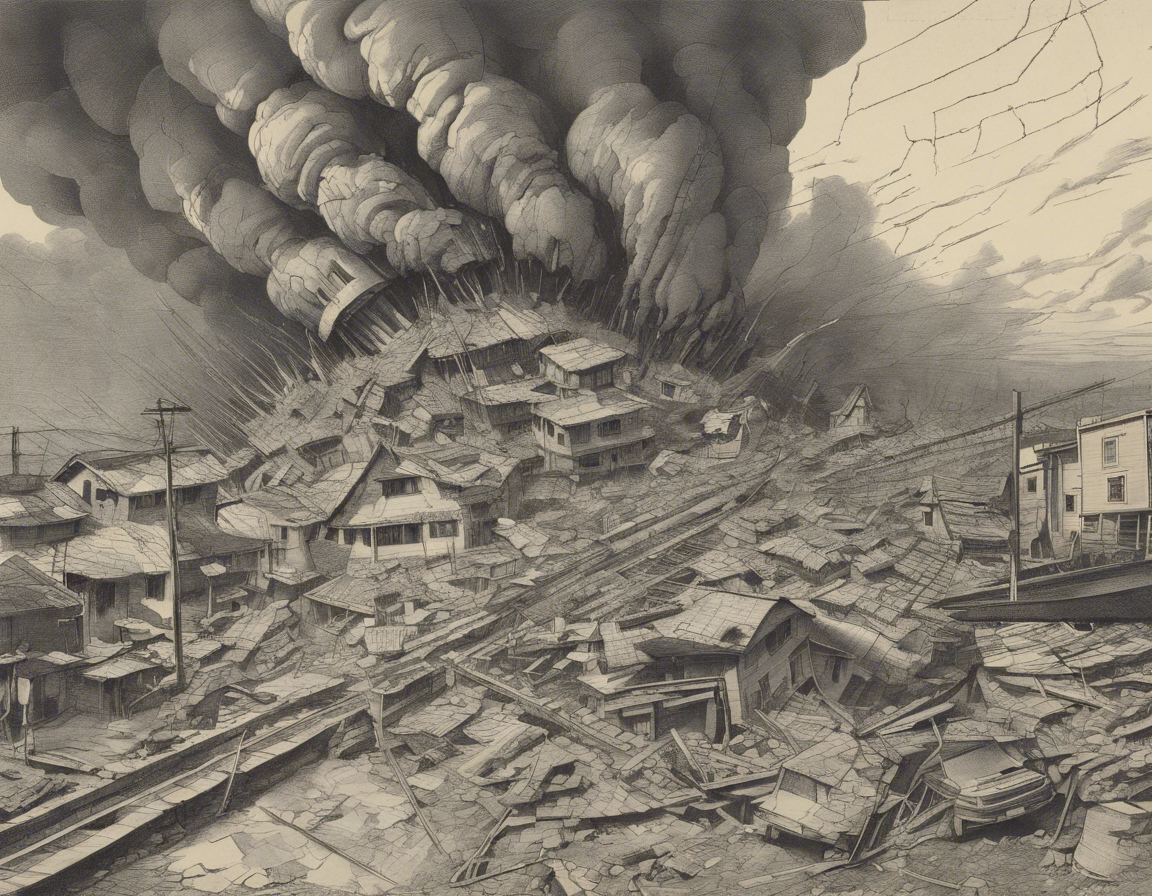Introduction
Earthquakes are a natural phenomenon caused by the sudden release of energy in the Earth’s crust that creates seismic waves. These seismic waves can cause significant damage to buildings, infrastructure, and pose a threat to human life. Earthquake strain plays a crucial role in understanding these seismic events and preparing communities for potential disasters. In this comprehensive guide, we will explore the concept of earthquake strain, its measurement, implications, and how it affects societies worldwide.
Understanding Earthquake Strain
What is Earthquake Strain?
Earthquake strain refers to the accumulation of stress within the Earth’s crust due to the movement of tectonic plates. This stress builds up along fault lines until it surpasses the frictional forces holding the rocks together, causing them to slip and generate seismic waves.
Types of Earthquake Strain
-
Compressive Strain: This occurs when tectonic plates move towards each other, leading to the compression of rocks along fault lines.
-
Tensile Strain: Tectonic movement in opposite directions can result in rocks being pulled apart, creating tension along fault lines.
-
Shear Strain: When tectonic plates slide horizontally past each other, shear strain occurs, causing rocks to grind against each other.
Measuring Earthquake Strain
Seismic Moment
Seismic moment is a measure of the total energy released during an earthquake. It is calculated based on the amount of slip on a fault, the area of the fault surface that slipped, and the stiffness of the rocks involved. The seismic moment magnitude (Mw) scale is commonly used to quantify the size of earthquakes.
Strain Gauges
Strain gauges are instruments used to measure the deformation of the Earth’s crust. By detecting changes in the length and orientation of rocks, scientists can monitor the build-up of strain along fault lines and assess the likelihood of an impending earthquake.
Implications of Earthquake Strain
Seismic Hazard Assessment
Understanding earthquake strain is essential for assessing seismic hazards and developing effective risk mitigation strategies. By analyzing strain patterns and fault behavior, scientists can identify high-risk areas prone to earthquakes and inform disaster preparedness efforts.
Earthquake Forecasting
Monitoring earthquake strain enables scientists to predict the likelihood of future seismic events. By analyzing strain accumulation over time, researchers can forecast the probability of an earthquake occurring within a specific region, helping authorities and communities prepare for potential disasters.
Engineering Considerations
Engineers use data on earthquake strain to design structures that can withstand seismic forces. By factoring in the expected strain levels in a particular region, engineers can construct buildings and infrastructure that are resilient to earthquakes, reducing the impact of these natural disasters on human life and property.
Case Studies
San Andreas Fault, California
The San Andreas Fault in California is a well-known tectonic boundary where the Pacific Plate and the North American Plate meet. The strain accumulated along the fault has resulted in several significant earthquakes, including the devastating 1906 San Francisco earthquake. Continuous monitoring of earthquake strain along the San Andreas Fault is vital for predicting and preparing for future seismic events in the region.
The Great East Japan Earthquake
The Tohoku earthquake that struck Japan in 2011 was a result of massive strain release along the subduction zone off the coast of Honshu. The earthquake and subsequent tsunami caused widespread destruction and highlighted the importance of understanding earthquake strain for disaster risk reduction and response planning.
FAQs
- How is earthquake strain different from earthquake stress?
Earthquake strain refers to the deformation and movement of rocks along fault lines before an earthquake, while earthquake stress is the force applied to rocks that causes them to deform and eventually slip, resulting in an earthquake.
- Can earthquake strain be measured in real-time?
While scientists can monitor earthquake strain using strain gauges and other instruments, predicting the exact timing and magnitude of an earthquake remains challenging.
- Does all earthquake strain lead to earthquakes?
Not all accumulated strain along fault lines results in earthquakes. Sometimes, the stress may be released through small, imperceptible movements known as aseismic creep.
- How do earthquakes relieve strain in the Earth’s crust?
Earthquakes occur when accumulated strain along fault lines exceeds the rocks’ strength, causing them to fracture and release energy in the form of seismic waves, thus relieving the built-up stress.
- Can humans cause or influence earthquake strain?
Human activities such as mining, reservoir-induced seismicity, and geothermal energy extraction can induce changes in the Earth’s crust that may contribute to increased seismic activity and strain along fault lines.
In conclusion, understanding earthquake strain is crucial for assessing seismic hazards, forecasting earthquakes, and designing resilient infrastructure. By monitoring strain accumulation along fault lines and using advanced technologies, scientists and engineers can work towards reducing the impact of earthquakes on society and enhancing disaster resilience.
